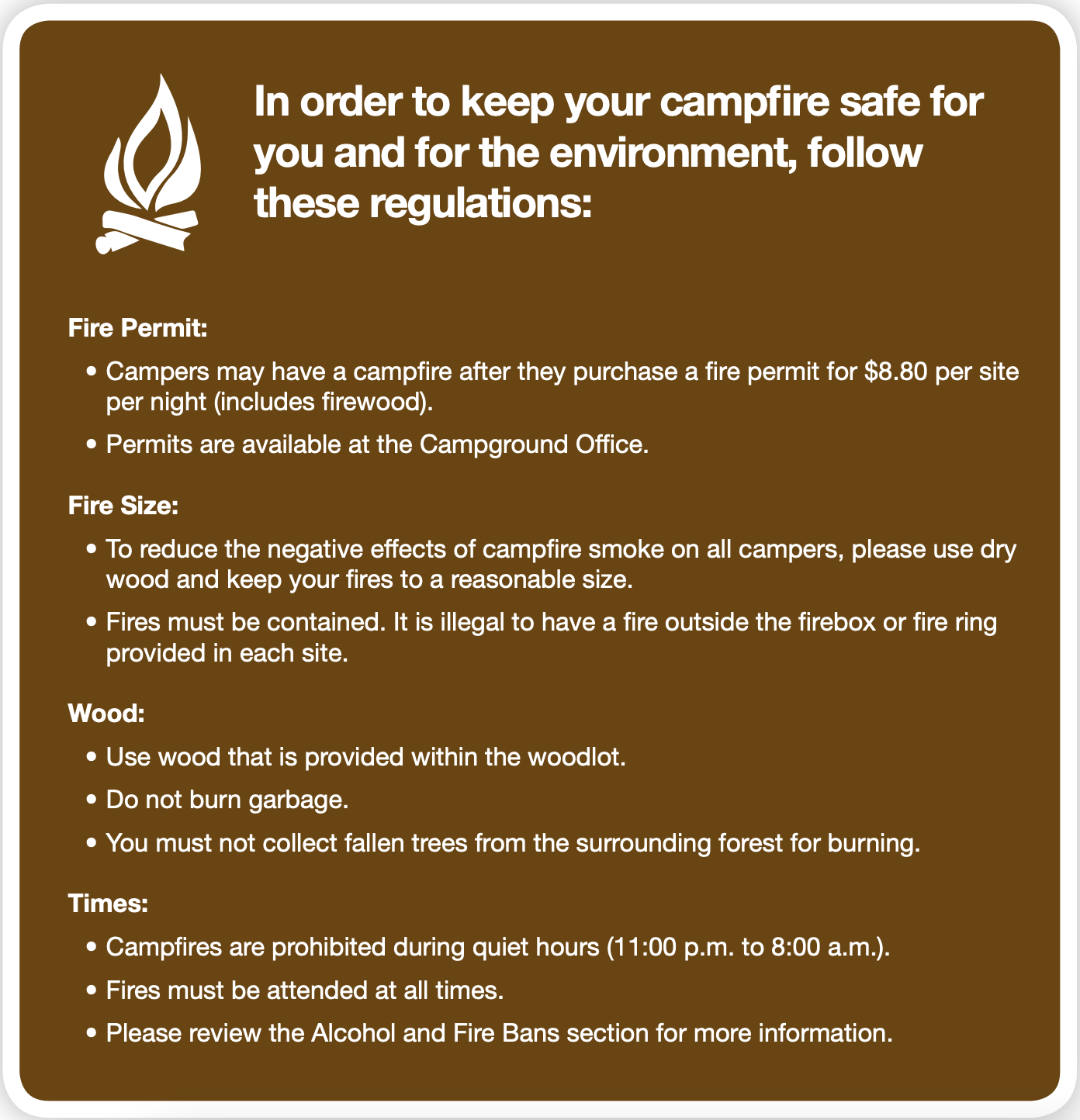6.5.8.1: Reading-"Do's" and "Dont's" Sign
- Page ID
- 256037
\( \newcommand{\vecs}[1]{\overset { \scriptstyle \rightharpoonup} {\mathbf{#1}} } \)
\( \newcommand{\vecd}[1]{\overset{-\!-\!\rightharpoonup}{\vphantom{a}\smash {#1}}} \)
\( \newcommand{\id}{\mathrm{id}}\) \( \newcommand{\Span}{\mathrm{span}}\)
( \newcommand{\kernel}{\mathrm{null}\,}\) \( \newcommand{\range}{\mathrm{range}\,}\)
\( \newcommand{\RealPart}{\mathrm{Re}}\) \( \newcommand{\ImaginaryPart}{\mathrm{Im}}\)
\( \newcommand{\Argument}{\mathrm{Arg}}\) \( \newcommand{\norm}[1]{\| #1 \|}\)
\( \newcommand{\inner}[2]{\langle #1, #2 \rangle}\)
\( \newcommand{\Span}{\mathrm{span}}\)
\( \newcommand{\id}{\mathrm{id}}\)
\( \newcommand{\Span}{\mathrm{span}}\)
\( \newcommand{\kernel}{\mathrm{null}\,}\)
\( \newcommand{\range}{\mathrm{range}\,}\)
\( \newcommand{\RealPart}{\mathrm{Re}}\)
\( \newcommand{\ImaginaryPart}{\mathrm{Im}}\)
\( \newcommand{\Argument}{\mathrm{Arg}}\)
\( \newcommand{\norm}[1]{\| #1 \|}\)
\( \newcommand{\inner}[2]{\langle #1, #2 \rangle}\)
\( \newcommand{\Span}{\mathrm{span}}\) \( \newcommand{\AA}{\unicode[.8,0]{x212B}}\)
\( \newcommand{\vectorA}[1]{\vec{#1}} % arrow\)
\( \newcommand{\vectorAt}[1]{\vec{\text{#1}}} % arrow\)
\( \newcommand{\vectorB}[1]{\overset { \scriptstyle \rightharpoonup} {\mathbf{#1}} } \)
\( \newcommand{\vectorC}[1]{\textbf{#1}} \)
\( \newcommand{\vectorD}[1]{\overrightarrow{#1}} \)
\( \newcommand{\vectorDt}[1]{\overrightarrow{\text{#1}}} \)
\( \newcommand{\vectE}[1]{\overset{-\!-\!\rightharpoonup}{\vphantom{a}\smash{\mathbf {#1}}}} \)
\( \newcommand{\vecs}[1]{\overset { \scriptstyle \rightharpoonup} {\mathbf{#1}} } \)
\( \newcommand{\vecd}[1]{\overset{-\!-\!\rightharpoonup}{\vphantom{a}\smash {#1}}} \)
\(\newcommand{\avec}{\mathbf a}\) \(\newcommand{\bvec}{\mathbf b}\) \(\newcommand{\cvec}{\mathbf c}\) \(\newcommand{\dvec}{\mathbf d}\) \(\newcommand{\dtil}{\widetilde{\mathbf d}}\) \(\newcommand{\evec}{\mathbf e}\) \(\newcommand{\fvec}{\mathbf f}\) \(\newcommand{\nvec}{\mathbf n}\) \(\newcommand{\pvec}{\mathbf p}\) \(\newcommand{\qvec}{\mathbf q}\) \(\newcommand{\svec}{\mathbf s}\) \(\newcommand{\tvec}{\mathbf t}\) \(\newcommand{\uvec}{\mathbf u}\) \(\newcommand{\vvec}{\mathbf v}\) \(\newcommand{\wvec}{\mathbf w}\) \(\newcommand{\xvec}{\mathbf x}\) \(\newcommand{\yvec}{\mathbf y}\) \(\newcommand{\zvec}{\mathbf z}\) \(\newcommand{\rvec}{\mathbf r}\) \(\newcommand{\mvec}{\mathbf m}\) \(\newcommand{\zerovec}{\mathbf 0}\) \(\newcommand{\onevec}{\mathbf 1}\) \(\newcommand{\real}{\mathbb R}\) \(\newcommand{\twovec}[2]{\left[\begin{array}{r}#1 \\ #2 \end{array}\right]}\) \(\newcommand{\ctwovec}[2]{\left[\begin{array}{c}#1 \\ #2 \end{array}\right]}\) \(\newcommand{\threevec}[3]{\left[\begin{array}{r}#1 \\ #2 \\ #3 \end{array}\right]}\) \(\newcommand{\cthreevec}[3]{\left[\begin{array}{c}#1 \\ #2 \\ #3 \end{array}\right]}\) \(\newcommand{\fourvec}[4]{\left[\begin{array}{r}#1 \\ #2 \\ #3 \\ #4 \end{array}\right]}\) \(\newcommand{\cfourvec}[4]{\left[\begin{array}{c}#1 \\ #2 \\ #3 \\ #4 \end{array}\right]}\) \(\newcommand{\fivevec}[5]{\left[\begin{array}{r}#1 \\ #2 \\ #3 \\ #4 \\ #5 \\ \end{array}\right]}\) \(\newcommand{\cfivevec}[5]{\left[\begin{array}{c}#1 \\ #2 \\ #3 \\ #4 \\ #5 \\ \end{array}\right]}\) \(\newcommand{\mattwo}[4]{\left[\begin{array}{rr}#1 \amp #2 \\ #3 \amp #4 \\ \end{array}\right]}\) \(\newcommand{\laspan}[1]{\text{Span}\{#1\}}\) \(\newcommand{\bcal}{\cal B}\) \(\newcommand{\ccal}{\cal C}\) \(\newcommand{\scal}{\cal S}\) \(\newcommand{\wcal}{\cal W}\) \(\newcommand{\ecal}{\cal E}\) \(\newcommand{\coords}[2]{\left\{#1\right\}_{#2}}\) \(\newcommand{\gray}[1]{\color{gray}{#1}}\) \(\newcommand{\lgray}[1]{\color{lightgray}{#1}}\) \(\newcommand{\rank}{\operatorname{rank}}\) \(\newcommand{\row}{\text{Row}}\) \(\newcommand{\col}{\text{Col}}\) \(\renewcommand{\row}{\text{Row}}\) \(\newcommand{\nul}{\text{Nul}}\) \(\newcommand{\var}{\text{Var}}\) \(\newcommand{\corr}{\text{corr}}\) \(\newcommand{\len}[1]{\left|#1\right|}\) \(\newcommand{\bbar}{\overline{\bvec}}\) \(\newcommand{\bhat}{\widehat{\bvec}}\) \(\newcommand{\bperp}{\bvec^\perp}\) \(\newcommand{\xhat}{\widehat{\xvec}}\) \(\newcommand{\vhat}{\widehat{\vvec}}\) \(\newcommand{\uhat}{\widehat{\uvec}}\) \(\newcommand{\what}{\widehat{\wvec}}\) \(\newcommand{\Sighat}{\widehat{\Sigma}}\) \(\newcommand{\lt}{<}\) \(\newcommand{\gt}{>}\) \(\newcommand{\amp}{&}\) \(\definecolor{fillinmathshade}{gray}{0.9}\)Before You Read
Complete these pre-reading activities before you begin to read lists and completed forms. Understanding the arrangement of words and white space in formal documents is an essential skill. It helps readers locate information faster.
MAY Does Not Always Mean What You Think 
Rules are formal sets of instructions. When we have the power to make rules, other people will interact with us for permission.
- The modal verb MAY is helpful in asking for or giving permission.
- However, MAY isn’t always about allowing or prohibiting action. Sometimes MAY shows possibility or hope.
- Compare the pairs of sentences below. Do both sentences mean the same thing? Choose = if the sentences have a similar meaning or ≠ if the sentences do not mean the same thing.
1. Campers may see bears in the campground.
= ≠
1. The campground permits campers to see bears.
2. May I cook over an open fire?
= ≠
2. Am I allowed to burn wood to make meals?
3. Clean bottles or cans may be put in the recycling bins or taken home.
= ≠
3. Campers have two choices for what to do with empty drink containers.
4. May campers bring a pet into the campground?
= ≠
4. Can campers bring a dog or cat into the campground?
5. May you travel home safely!
= ≠
5. You have permission to drive carefully on your way home.
Vocabulary: Synonyms 
Choose ALL the words or phrases on the right that are synonyms for the word on the left.
|
bare |
basic |
a couple of |
a lock |
to uncover |
|---|---|---|---|---|
|
bear |
to carry |
to give birth |
a large, furry, wild animal |
to hold |
|
charge |
to attack |
to ask as a fee |
a place to pray |
a price |
Predictions
You are going to read a sign from Bear Bottom Campground. On the sign are “do’s” and “don’ts” for campers. Some people think rules are mostly “don’ts” or prohibitions.
Claire calls her rules “camping courtesies.” Since courtesy means courteous or good manners, do you predict that there will be more negative “don’ts” or more positive “do’s” on Claire’s sign?
- What kind of obligations, or responsibilities, do campers have to each other? Suggest one rule for good camping behaviour during the daytime and another courtesy for after sundown.
- What will Claire do to ensure the safety of campers?
- Will Claire use the same words to write prohibitions, courtesies, and safety rules?
- If not, how will Claire adjust how she writes about dangerous behaviour compared to helpful behaviour or in contrast to banned behaviour?
Reading 1
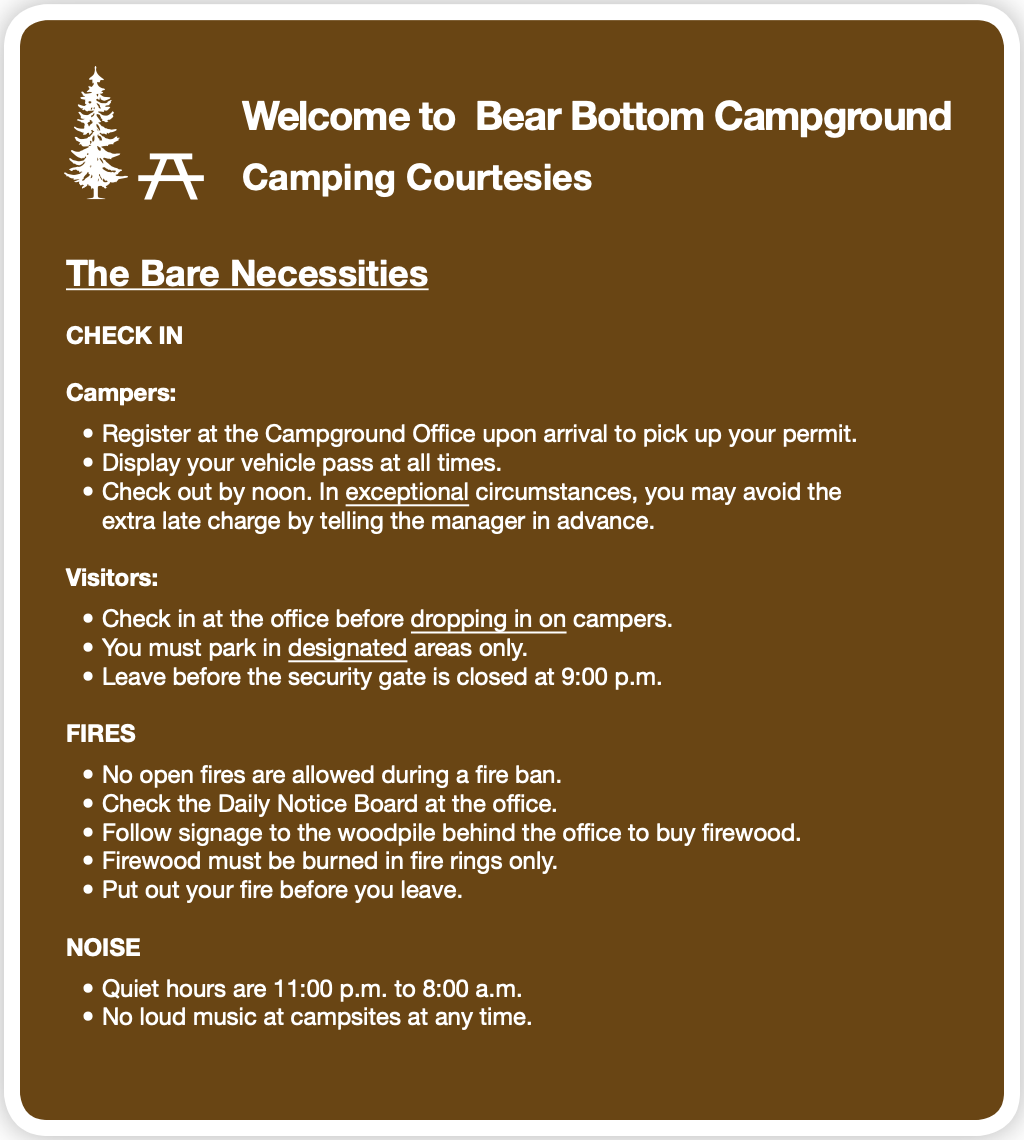
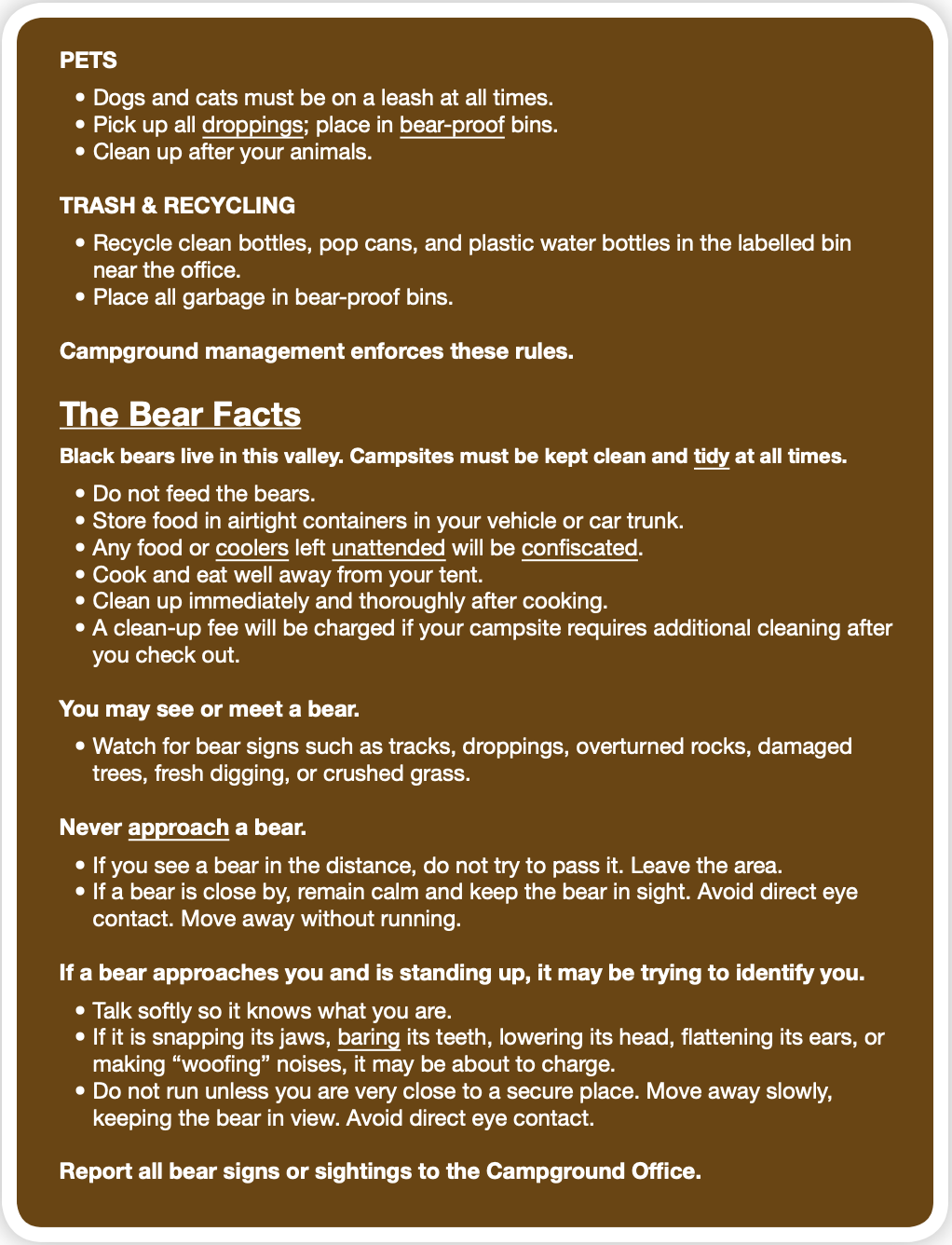
Strategy 2: Inferring Meaning
When writers are indirect, readers understand the true meaning by inferring, or guessing, using the context.
- Choose all the possible answers by inferring.
- “In exceptional circumstances, you may avoid the extra late charge by telling the manager in advance” means that
- there is a way to stay after noon and not pay an extra fee
- paying an extra fee for leaving late is unusual
- except for the manager, everyone pays extra charges
- the manager always cancels late charges for people who talk to her
- “Visitors must park in designated areas only” means that
- visitors cannot drive to the park
- there are visitor parking signs
- Bear Bottom Campground permits visitors
- you can park wherever you like
- “No open fires are allowed during a fire ban ”means that
- barbecues are never allowed
- it doesn’t rain very much at Bear Bottom Campground
- the manager can prohibit fires
- you’re not permitted to have a fire
- “In exceptional circumstances, you may avoid the extra late charge by telling the manager in advance” means that
Strategy 3: Paraphrasing
- Choose the best answer.
- Another way to say “Any food or coolers left unattended will be confiscated” is
- “Always watch your food because Claire may take it away.”
- “Claire removes any food you leave outside when you’re not around.”
- Another way to say “A clean-up fee will be charged if your campsite requires additional cleaning after you check out” is
- “Campers who leave a mess behind will get a bill for Claire’s extra work.”
- “Check that another fee isn’t added to your charges when you leave the campground.”
- Another way to say “If a bear is close by, remain calm and keep the bear in sight” is
- “If you are near a bear, watch out.”
- “Keep your eyes on any bear you meet and stay cool.”
- Choose the best answer. Roshan reported the theft to the police
- the day it happened
- on November 5
- between 8:45 p.m. and 9:15 p.m.
- before sundown
- Another way to say “Any food or coolers left unattended will be confiscated” is
Extension Activities 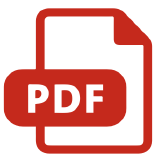
Focus on Unwritten Rules
Our communities have many rules that are communicated by symbols instead of lists of words and sentences like the ones Claire made for the campground. Here are three examples you might recognize:
For each photo below, the rule we know but isn’t stated in words could be
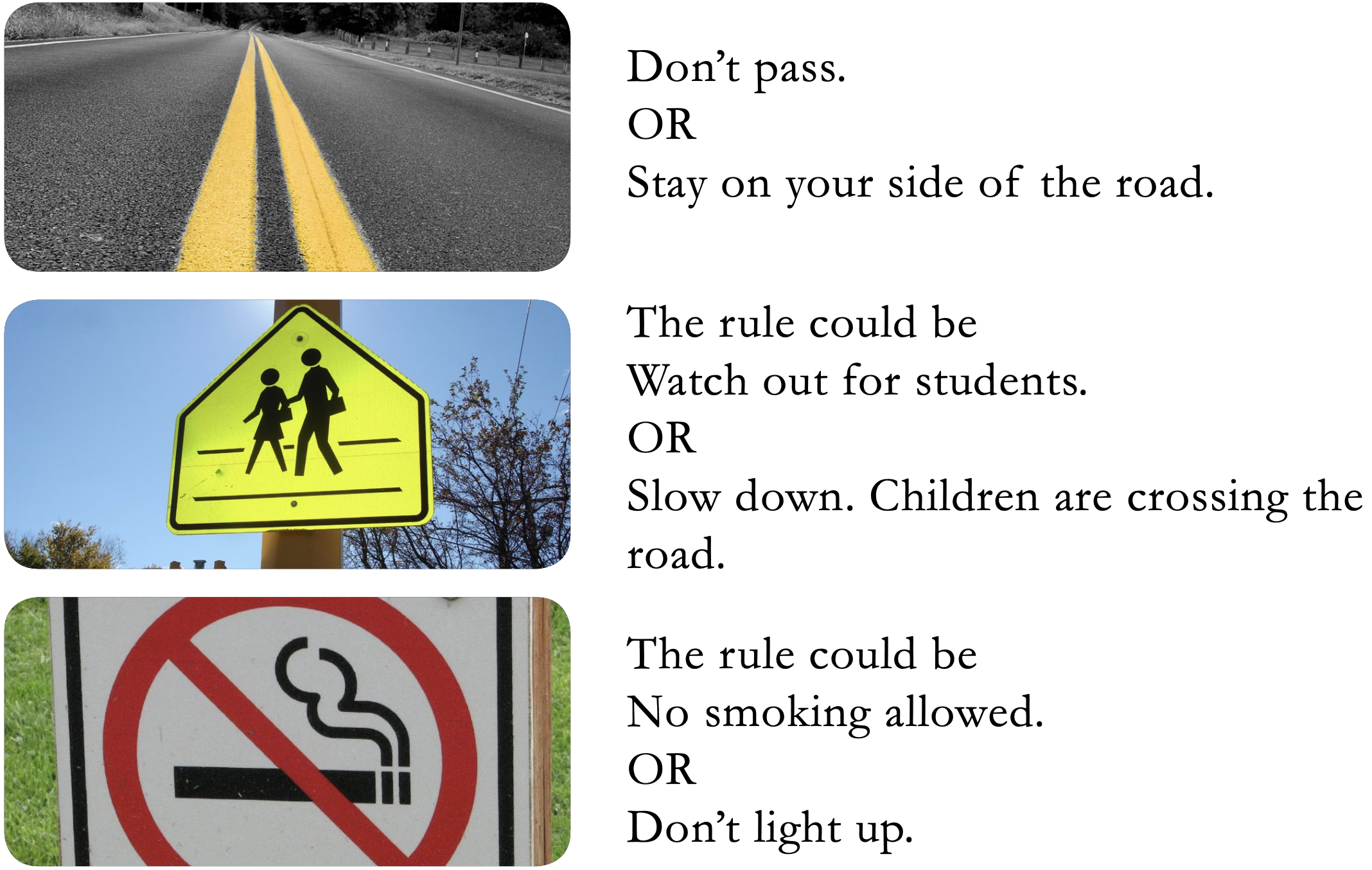
For this activity, extend or stretch your learning outside English class.
- Go out in your community.
- Use your cellphone or camera to take pictures of symbols that are really messages about rules.
- Print your pictures or save them in a format that you can easily show to other people.
- Identify a rule that each symbol communicates.
- Write the rule in a couple of different ways.
Reading Progress Check 
On the next page, you are going to read four rules for campers about fires.
Read the questions and answers before reading the rules. This is a strategy to help you locate the answers more easily.
After you read the set of rules on the next page, answer the questions.
- Choose the best answer.
- If you are a camper, you ________ these regulations.
- may follow
- must follow
- don’t have to follow
- follow
- Campers with permits are given permission to
- take wood away from the campground
- smoke around a campfire
- bring wood from home
- build a campfire
- The campground rules prohibit
- fire regulations
- burning wet wood
- quiet hours
- leaving while a fire is burning
- Campers are obliged to
- pay for building a fire
- make sure to obey parking signs
- burn garbage
- ban alcohol
- These regulations are
- many “do’s” and a few “don’ts”
- mostly negative rules
- more “don’ts” than “do’s”
- only a few of many rules
- If you are a camper, you ________ these regulations.
- Read the rules for campers about fires.
